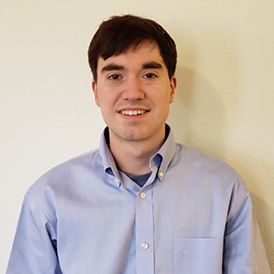Core Facility Directors
BioSpectroscopy Core Research Laboratory
Personal Summary
My undergraduate education consisted of a B.A. in biochemistry and molecular biology from The College of Wooster (Wooster, OH). I chose to attend the University of Montana because of the unique location, and the fact that I was interested in how manmade materials can cause inflammation and disease. Because of this, I chose to pursue a PhD in the toxicology graduate program.
My research in Dr. Andrij Holian’s lab focuses on nano-toxicology and how engineered nano-materials (ENM) contribute to pulmonary inflammation. These are materials less than 100 nm in one dimension that are used in many everyday products. In particular, I am interested in how ENM trigger the NLRP3 inflammasome in macrophages and subsequent inflammation. A proposed key step in this pathway is phagolysosomal membrane permeability (LMP). For this to occur, the presence of ENM in the phagolysosome destabilizes the membrane of the phagolysosome in some way. To investigate this further, I study the interaction of various ENM with cells and lipid membrane model systems for the purpose of better understanding how these materials interact with and change the properties of lipid membranes. A better understanding of the molecular mechanisms driving LMP will aid in the design of safer ENM and potential therapeutics for ENM-exposed individuals.
My training at the University of Montana will help me become an independent scientist. I look forward to using the knowledge and lab skills I’ve gained here at whatever future position I have after graduation. Below there is a list of my publications.
Education
Faculty Mentor - Andrij Holian
Publications
Publications:
Anderson DS, Sydor MJ, Fletcher P, Holian A (2016) Nanotechnology: The Risks and Benefits for Medical Diagnosis and Treatment. J Nanomed Nanotechnol 7:e143. doi:10.4172/2157-7439.1000e143
Steele, H.B.B., Sydor, M.J., Anderson, D.S. et al. Using Time-Resolved Fluorescence Anisotropy of di-4-ANEPPDHQ and F2N12S to Analyze Lipid Packing Dynamics in Model Systems. J Fluoresc (2019). https://doi.org/10.1007/s10895-019-02363-7
Sydor, M.J., Anderson, D.S., Steele, H.B.B., Ross, J.B. Alexander, Holian, A. Effects of titanium dioxide and zinc oxide nano-materials on lipid order in model membranes,Biochimica et Biophysica Acta (BBA) - Biomembranes,Volume 1862, Issue 9,2020. doi: https://doi.org/10.1016/j.bbamem.2020.183313
Sydor, M.J., Anderson, D.S., Steele, H.B.B., Ross, J.B. Alexander, Holian, A. Fluorescence Lifetime Imaging Microscopy and Time-Resolved Anisotropy of Nanomaterial-Induced Changes to Red Blood Cell Membranes, In submission 2021.

